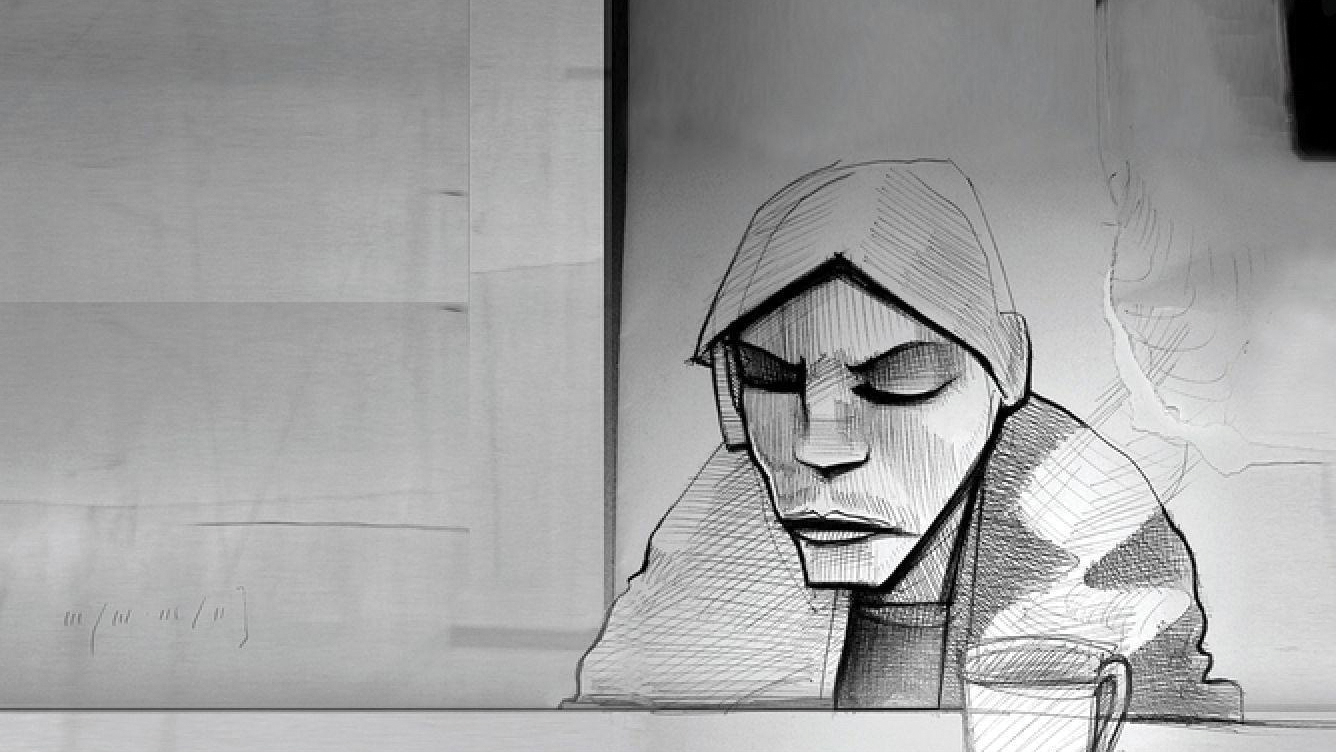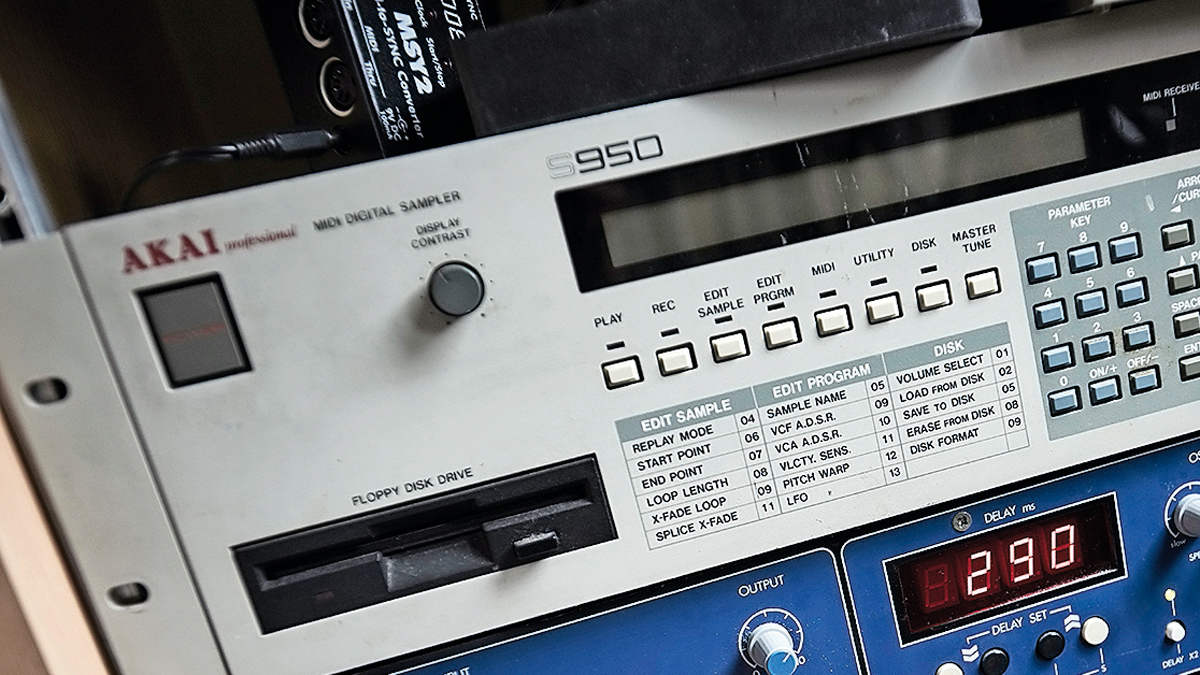“I’m not a ‘musician’ - I was always scared of people who had studios”: How Burial produced the 21st century’s most influential electronic album on a “rubbish, dying” computer with outdated software
Creating a masterpiece on an ancient copy of Sony Sound Forge, Burial showed us all that it's not what you have - it's what you do with it

Few artists inspire the kind of universal reverence that Burial does. Appearing seemingly out of nowhere in the early ’00s, his downcast and ethereal tunes synthesised UK garage and the then-revolutionary sounds of dubstep with cinematic textures, atmospheric sound design and raw emotion.
There’s a reason why, if you ask your favourite producer who their favourite producer is (and we do quite a lot of that), Burial is often the answer you’ll receive: he’s behind some of the most powerfully emotive, artfully produced electronic music that’s ever been made.
Burial’s first release was the 2005 EP South London Boroughs. That EP was also the first release on Hyperdub, a record label run by producer, DJ and academic Kode9 that’s since become one of UK electronic music’s most acclaimed imprints.
Speeding up a slanted 2-step groove to 140bpm and shrouding it in evocative synths and samples before rolling it out over a hefty sub bassline, the title track leans into classic dubstep (a genre that was in rapid ascendance at the time of Burial’s debut) while lacking the half-time feel that typifies the genre. Much like Burial, dubstep producers drew from the swung, skippy rhythms of 2-step and dark garage, the cavernous atmospherics of dub and the sonic fingerprint of jungle, DnB and hardcore.
Though Burial’s self-titled album, released a year later, placed him on the map for fans of UK electronic music, it was his sophomore effort that would elevate him from the status of mysterious rising artist to that of living legend. Released in 2007, Untrue has been almost unanimously rated as one of the most significant musical landmarks of the 21st century.
The clattering drums and dank subs of his self-titled debut were still present, but this time, something was different: there was a neon glow in the darkness. The tracks were still cloaked in reverb and buried in vinyl crackle, but disembodied voices had emerged from the gloom, cut-up vocals that shone with a sorrow-tinged hopefulness. Capturing in sound the moody, rain-soaked streets of Burial’s South London home, Untrue captivated listeners around the world.

If it ain't broke... 5 artists making music with old-school technology
Perhaps the most fascinating thing about Burial’s story is that Untrue was pieced together using an ancient version of Sony’s Sound Forge running on a “rubbish, dying computer” that intermittently leaked smoke. In a rare interview with dubstep producer Blackdown, Burial opened up about the reason he favours software that many might consider obsolete. “I’m not a ‘musician,’ no training, nothing. So I was always scared of people who had studios,” he says. “So I thought to myself, fuck it, I’m going to stick to this shitty little computer program, Sound Forge. I don’t know any other programs.”
Want all the hottest music and gear news, reviews, deals, features and more, direct to your inbox? Sign up here.
Many producers might have seen Sound Forge’s lack of sequencing capabilities as a drawback, but instead it compelled Burial to write music in a unique fashion, arranging samples on a blank and grid-less timeline to produce the off-kilter rhythms that define his sound. “I can only see the waves,” he says. “I know when I’m happy with my drums because they look like a nice fishbone. When they look just skeletal as fuck in front of me, and so I know they’ll sound good.”
“All my favourite producers came out of nowhere and then went back underground. That’s what I want to be like“
While Burial’s music alone is enough to warrant his idolisation, there’s no doubt that the mystique surrounding his identity has contributed. Very little is known about William Bevan, and he’d like to keep it that way. He’s not on social media. He’s never performed his music live. The number of images of him publicly available on the internet can be counted on one hand. He spoke to a handful of journalists in the first few years of his career, but has remained tight-lipped ever since.
Why remain so resolutely enigmatic? “It’s just the way I am,” Burial told The Guardian in 2007. “I can’t step up. I want to be in the dark at the back of a club. I don’t read press, I don’t go on the internet much, I’m just not into it. It’s like the lost art of keeping a secret, but it keeps my tunes closer to me and other people,” he continues. “All my favourite producers came out of nowhere and then went back underground. That’s what I want to be like.”
Burial in four tracks
1. Burial - Archangel (2007)
Probably his best-known song, Archangel is peak Burial: opening with a slinky drum pattern built from blocky, wooden sounds and couched in crackly ambience, it wastes no time in introducing a vocal hook that vividly demonstrates the producer’s dab hand at sampling.
Cutting up the vocal from Ray J’s One Wish into pieces, Burial reassembled it while pitching each slice individually to create a new vocal melody that’s laid down over rising strings sampled from the Metal Gear Solid OST. Genius.
2. Burial & Four Tet - Nova (2012)
Burial has always been choosy with his collaborations, but he’s done more than a few, having worked with Radiohead’s Thom Yorke, Massive Attack, Zomby, The Bug and EL-B in the past. His most inspired link-up, though, has to be with Four Tet, who he actually went to school with.
A dreamy slice of ambient house, Nova finds Four Tet’s shimmering, buoyant electronica tempering Burial’s rain-soaked gloom, making for what’s probably the cheeriest track he’s ever released.
3. Burial - Come Down To Us (2013)
In the years following Untrue, Burial’s style shifted towards a new structural blueprint: longer tracks began to stretch past the 10-minute mark and venture through a number of varied segments.
Come Down To Us reaches 13 minutes, trading in his beloved 2-step drums for trip-hop’s sedated crawl and exposing the producer’s sentimental side. Sampling a moving speech from transgender filmmaker Lana Wachowski, Burial described the track as an “anti-bullying tune” and an “angel’s spell”, aimed at protecting listeners from dark times and self-doubt.
4. Burial - New Love (2022)
Burial’s music has always been ‘ambient’, to a degree – its vibe has been rooted in the exploration of space and atmosphere since the very beginning – but recent years have seen the producer largely abandoning the rolling drums with which he made his name, and fully embrace the ambience. The Antidawn EP, released last year, is made up of 45 minutes of ghostly soundscapes, distant voices, fuzzy textures and obscure samples, and New Love is a haunting highlight.

I'm MusicRadar's Tech Editor, working across everything from product news and gear-focused features to artist interviews and tech tutorials. I love electronic music and I'm perpetually fascinated by the tools we use to make it.



